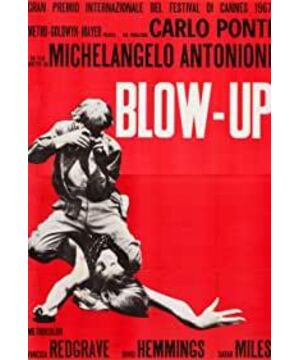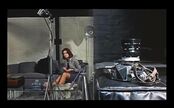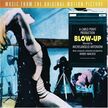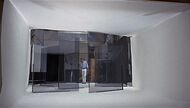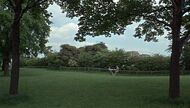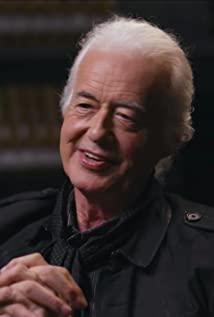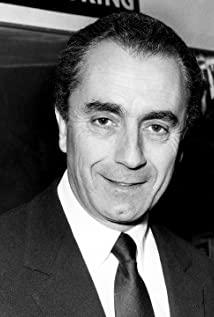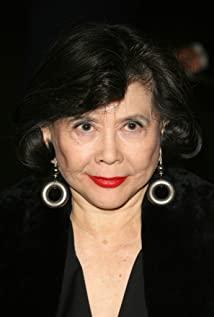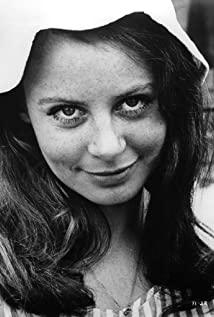God, I finally understand a little bit of Antonioni, I'm touched
The theme of "Zoom" is very clear, and it throws the question to the audience, that is, whether photography, as a means of writing images, is the truth or an illusion. The act of zooming in is shown in the image as the photographer develops the film and zooms in until the corpse is clearly seen. The corpse that was clearly visible on the first night, disappeared on the second day, implying that what the photographer saw on the first night might just be an imaginary constructed by him. In the fictional tennis match at the end, his behavior verifies the influence of subjective judgment, and by imagining non-existent tennis balls, he caters to the cognition of the tennis-playing group. All previous reasoning and the image itself are overturned by a hallucinatory tennis ball.
Sontag spends a lot of space in On Photography discussing the function of photography itself. Photography, like writing, is essentially a tool for recording, and when photography becomes art, there must be artists hiding behind the camera. The insurmountable gap between the artist's selective record with subjective experience and the reality has become the greatest paradox in the existence of photographic art. Not only photography that is regarded as art, but as long as it is an image that enters the camera, it has been screened by photographers. The image itself is the medium, not the reality. Humans use the image to derive the conclusion. The conclusion itself is based on the medium that is difficult to be regarded as real, and the conclusion loses its credibility.
After Antonioni denies the connection between the image as a medium and the real, he leaves a question behind the nothingness. What can be regarded as real, regarded as meaningful. In the film, the propellers that the photographer bought with great effort were directly stored in the warehouse, the guitar frets that were snatched were discarded after leaving the rock scene, and the placards that rolled down from the back seat of the car were just waste paper after leaving the appealing hippies. . They were all once seen as significant things, and they lost their real existence after leaving a specific environment and the identity of the user. Like photographs, these objects are all sustenance for a momentary medium, and when the associated reality behind them is lost, the objects no longer have any rationality.
Antonioni is a master at playing with composition. There are no real and real objects in his films, and every frame of the set is constructed from abstract graphics, which makes his film images look extremely condensed and distorted. His signature dichotomous composition and prominent use of red are also seen throughout "Zoom," reminiscent of the Italian painter Caravaggio, who was equally adept at using red to flaunt his style centuries ago. Although the entire film can't be called a narrative, the script is still very delicate. Connect objects—images—reality in series, move closer step by step, organize events with inner philosophical logic, and mix reality, fantasy, and dream in the same time and space. Antonioni, heavily influenced by Freudianism and early surrealist masters such as Bruel, abandoned the drama of the film, choosing to use pictorial metaphors and details of the actors' performances to complement the coherence, while showing the characters in action Appearance and mental activity. In the middle of the film, the photographer uses the language of the wonderful shots in the paragraphs where the photo is cut. Through the difference of the scene of the photo, without changing the scene of the lens, switch back and forth between the medium, near and long shots. This method of handling can easily make the audience uncomfortable, and it also uses the discomfort to create a suspenseful atmosphere, which makes people stunned.
PS: When I saw the yardbirds at the beginning, I thought it was the original soundtrack, but I didn't expect it to be a cameo by the band. It's unscientific that the British would stand up straight at the duck neck performance, and jeff was forced to smash the guitar and throw the strings.
View more about Blow-Up reviews


